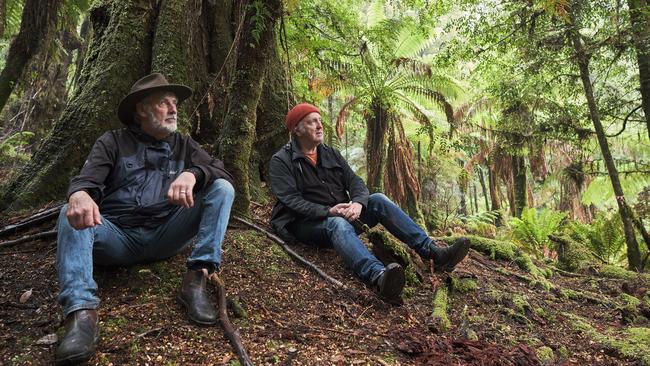Rockers back Bob Brown bid to save ‘global heirloom’ of Tarkine wilderness
A stunning corner of Tasmania is arguably the best national park Australia never had. But a fresh campaign, with some rock star and business backing, is hoping to change that.

It could be the best national park Australia never had.
From wild, rocky coastline to one of the southern hemisphere’s largest tracts of temperate rainforest, Northwest Tasmania’s Tarkine has documented National and World Heritage values.
Yet its listing as either National or World Heritage, with accompanying protection, has so far eluded the efforts of generations of conservationists, scientists and locals. Bob Brown is hoping to change that.
Aided by corporate and business backers, Indigenous groups, a new film and book, and some Aussie rock legends, the veteran activist is launching a fresh campaign to protect 500ha of Takayna, the region’s Indigenous name, and return it to First Nations custodianship.
Dr Brown believes election 2025 could deliver a hung parliament where World Heritage listing for the region might be a price a minority government is willing to pay for Greens or teals support.
“It is a global heirloom – it qualifies for World Heritage on seven of the 10 potential parameters and there’s only two other places in the world that do that – Southwest Tasmania and the mountains of China,” Dr Brown told The Australian.
But the former Greens leader is not relying solely on the region’s ecological and Aboriginal archaeological values to argue for a cap on mining and an end to old-growth logging.
“It’s an enormous potential tourism goldmine for one of the poorest electorates in Australia – Braddon – into the future,” he said. “Because unlike Atlantic salmon and logging, it is sustainable.”

The Bob Brown Foundation has developed a multi-day bushwalking proposal to take Tarkine-based tourism to a new level, and is encouraging Australians to visit the region to see for themselves.
And while resistance from the timber and mining industries might be expected, Dr Brown says existing mines would be carved out of any world heritage area.
To take the message national and global, a new coffee-table book, takayna / Tarkine – one of the last wild places on Earth, published by Australian Geographic, and a documentary, were launched this week.
The film, Takayna, Heart of Lutruwita, by Matthew Newton and Anna Brozek, has begun a summer season of hundreds of screenings nationally, aimed at luring tourists – and, more controversially, potentially protesters – to the region.

This arts-led lobbying effort – part-funded by global outdoor clothing company Patagonia and businessman Robert Purves – has been joined by Midnight Oil guitarist and keyboardist Jim Moginie and Goanna’s Shane Howard.
The two visited the region last week and both have composed songs in tribute to its tannin-stained rivers and ancient forests, performing them live at a launch in Hobart’s Theatre Royal on Wednesday.
“The biodiversity and the richness of the rainforest, the softness of the ground, is just so gorgeous,” said Moginie, of his first visit to takayna. “It’s a spiritual experience, there’s no other way to describe it.
“Its protection is so important for our future, for our grandkids. The great cathedrals of France have nothing on this.”
Howard, a frequent visitor to Tasmania who famously also penned a song (Let the Franklin Flow) to help save the Franklin River in the 1980s, hopes Australians will take note now, as they did then.
“Where we were standing in the rainforest – myrtles towering above us and eucalypts 50m to 60m high – is where a tailings dam will cover them all,” Howard said, of a proposed mine tailings dam, near Rosebery.
“It doesn’t make sense to be doing this in the 21st century, when there are alternatives. We can do both – we can have the forest protected and have mines, without having to destroy such a precious area.”
Some in the mining and forestry sectors argue there is no need for a higher level of protection for the region.

“Some would have you believe that the Tarkine is one tree away from destruction – that is simply not the case,” said Nick Steel, chief executive of the Tasmanian Forest Products Association.
“The area known as the Tarkine is under no threat and all forestry and mining practices are strictly limited to agreed areas, areas that are minuscule in the scale of the vast protected areas.
“The reality is that the Arthur Pieman and surrounding areas are a great example of how mining, forestry, recreation and conservation have coexisted in harmony for more than 150 years, well before it was nicknamed the Tarkine and well before the current protesters moved in.”




To join the conversation, please log in. Don't have an account? Register
Join the conversation, you are commenting as Logout